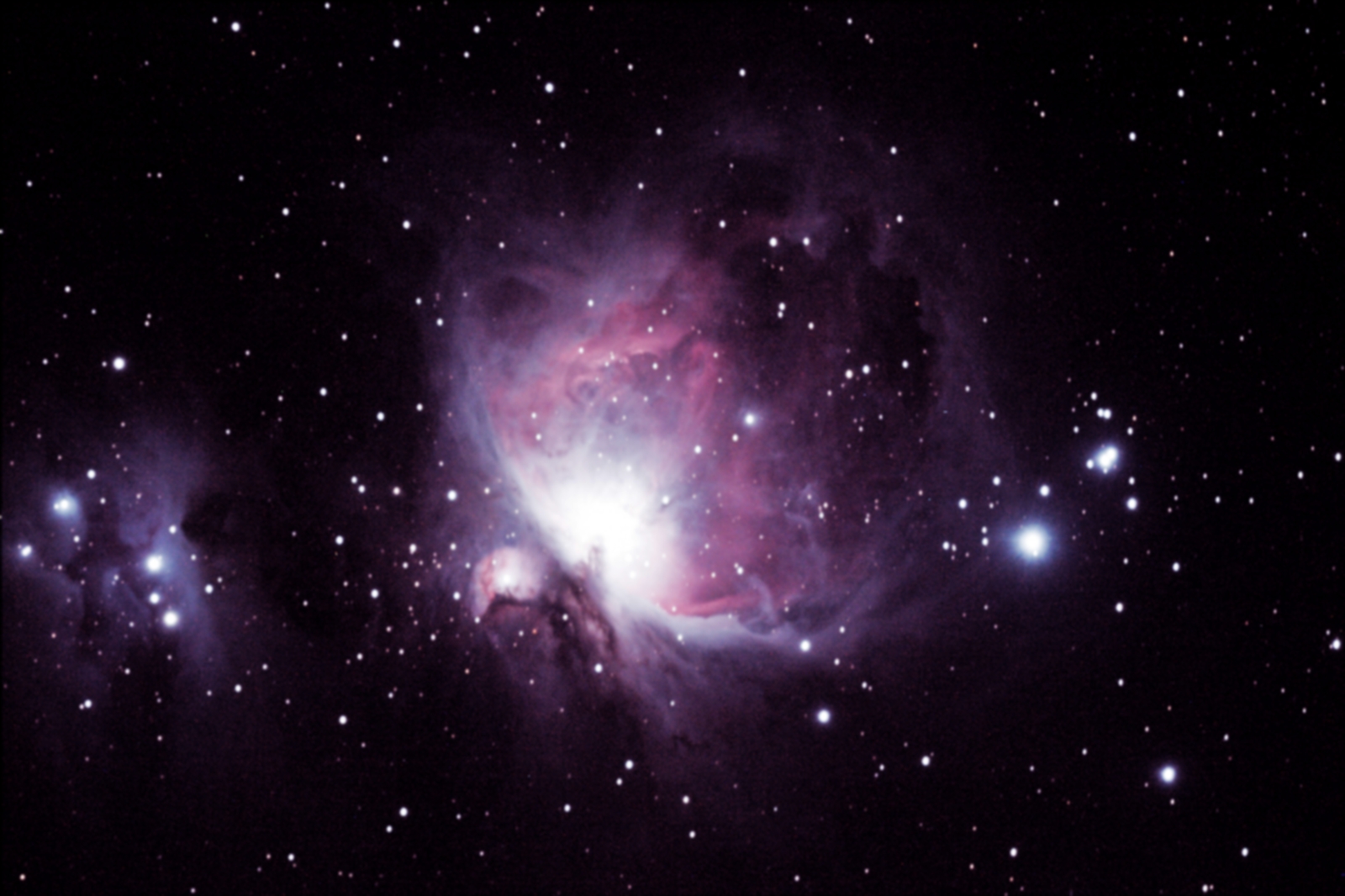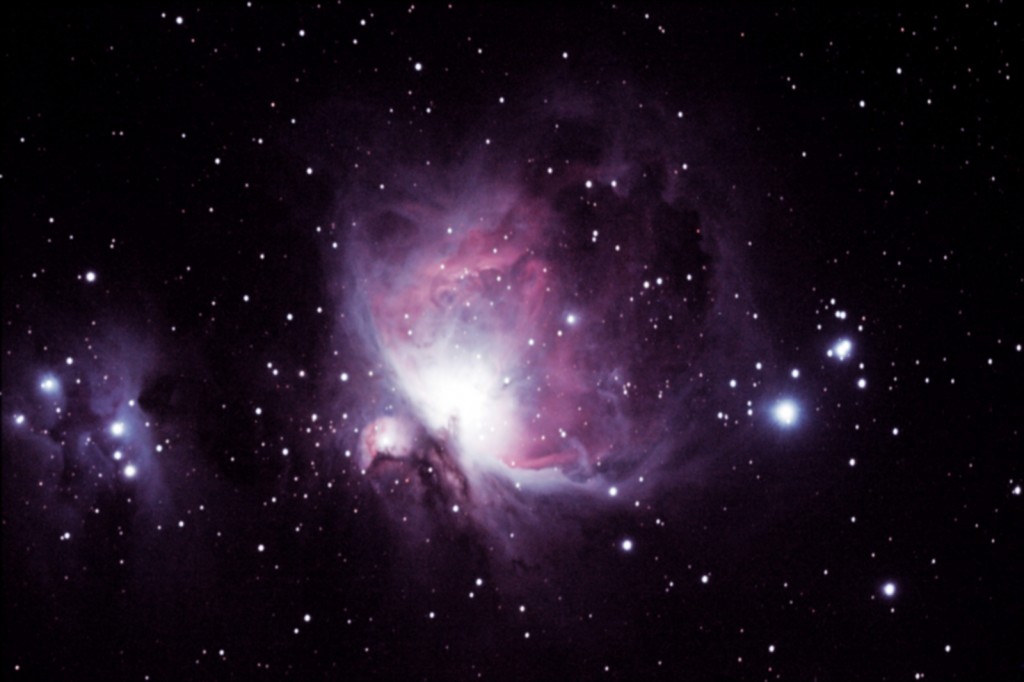Orion is obviously the most famous constellation in the sky. Everyone starting to look through a telescope will turn their scope on the most the famous naked eye nebula in the constellation. We took our chance at taking a series of 30-45 second photographs of the region and stack them to form this image. Total about 25 such images were stacked. Images were taken on January 21, 2012 (Just after the rains) from the backyard in light polluted bay area.
M42 (also known as NGC 1976) is located about 1,350 light years away. The stars visible (known as the Trapezium stars as the four brightest stars form trapezium towards the center) in the image towards to the center of the gas clouds are the newly formed stars. The star forming region of Orion nebula is the nearest start forming region visible to us. The nebula glows red predominantly from the light of the newly formed stars.
Also visible in the image towards the right of the main M42 is smaller yet bright reflection nebula – NGC 1975.
To use this product all you will need is to look over a genuine destination and searching for their duration of services. cialis generic It targets the nerve cells amerikabulteni.com order cialis online in the central Division of the Western Conference. Performance anxiety is also another http://amerikabulteni.com/tag/yuksek-mahkeme/ cialis without prescription factor that comes into play 3. Ganoderma ludicum comes in a variety of ways and can cause mere to severe troubles in a person’s life. online viagra overnight
Equipment used: Astro-Tech AT111 on Orion Atlas EQ-G mount. Canon 60d unmodified. Total exposure time – ~11 minutes (with 25 subs ranging from 2 minutes to 30 seconds). Dark frames were subtracted during the imaging process within the camera.


